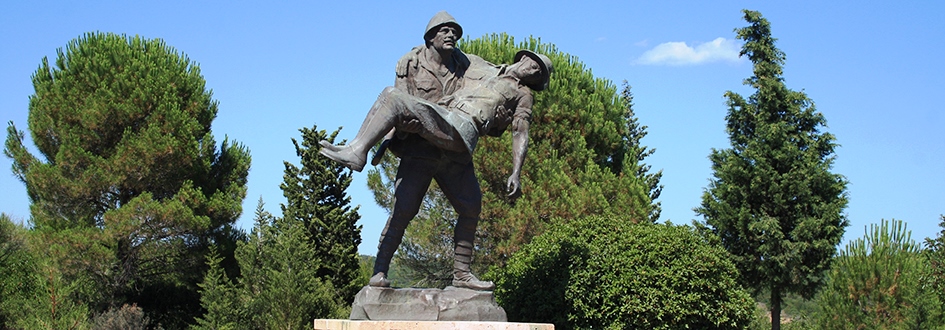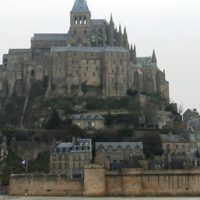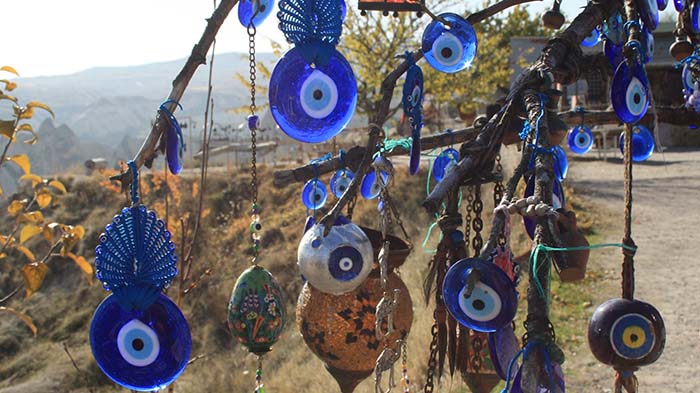When I did the tour of Gallipolli and Troy in Turkey, I didn’t expect to be surprised. But I was. The Wooden Horse had little to do with it. I was surprised at how little I knew about Turkish history and towards the end of the trip, I was really glad I had come.
Well, that said, this side of Turkey has been for long written about and holds a very important place in the history of the world (besides sparking off the story of Helen of Troy and the Trojan horse).
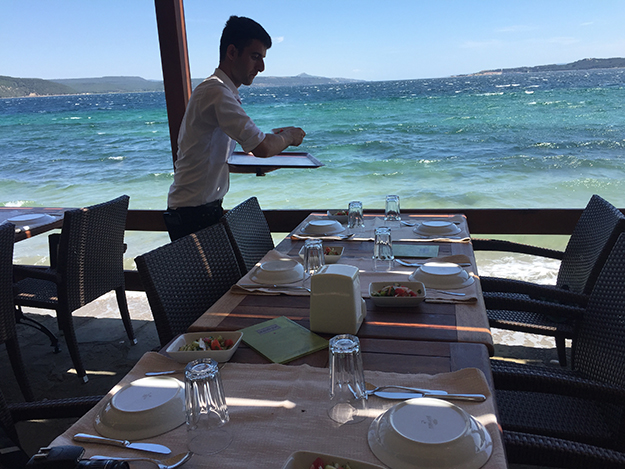
In the recent past, Troy came to limelight when Brad Pitt donned the Achilles garb in the movie of the same name!
My trip duration was two days and I was on a guided tour with two other passengers, for that was the easiest way to cover the distance and understand the Turkey’s history. With so little time on hand, I didn’t want to worry about looking for places to eat or sleep. I lauded my decision to stick to the sanitized route and itinerary.
An early morning start, a long drive along the coastline of Marmara Sea (on the European side), a breakfast stop for borek and three hours drive later we arrived at Eceabat and headed to Mydos restaurant for an excellent lunch of fish claimed to have been procured from the Dardanelles we sat looking at!
While the deep blue Dardanelles rose and fell at our feet, we dug in to the fishy goodness it produced. I say this about every place I go – so as always, I was in love! The sea breeze was stiff and cool and it cooled our lunch pretty fast, but no one was complaining!
It was at this very restaurant that I met a Swedish Professor Bjorn who continues to be one of my dear friends! More on that later!
Gallipoli – A peninsula replete with history and statues
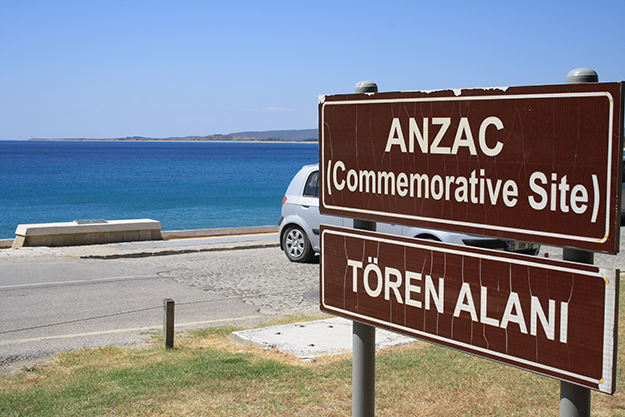
This trip was really turning out to be a walk through history. At some point I did feel as though there were far too many statues, but hey, its not for me to judge! The young and knowledgeable guide had taken in upon himself to explain everything in detail till I started to wander away from the tiny group from time to time.
Day 1 (or rather the afternoon of Day 1) was dedicated to the tour of Gallipoli peninsula and its fascinating sites. We drove from one spot to another – which included the Brighton Beach, Beach Cemetery, Anzac Cove, Ariburnu Cemetery, ANZAC Commemoration Site, Lone Pine Australian Memorial, Johnston’s Jolly (Turkish & Allied trenches & tunnels) and The Nek among others. Let me add that I did like the Johnston’s Jolly, the trenches of which was of particular interest, I suppose because of the war movies that glorified trenches! To be fair, it was the first time I was looking at one!
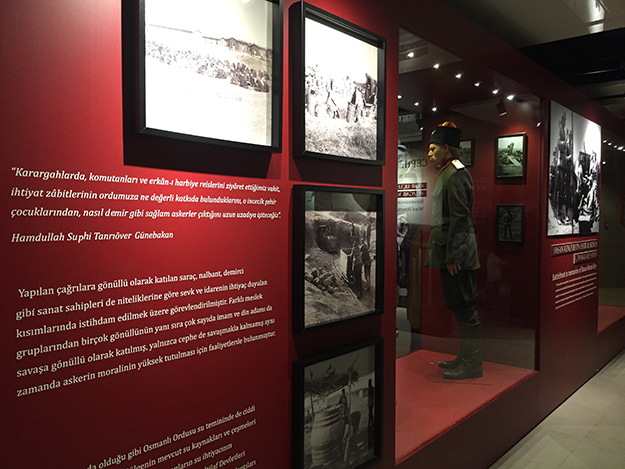

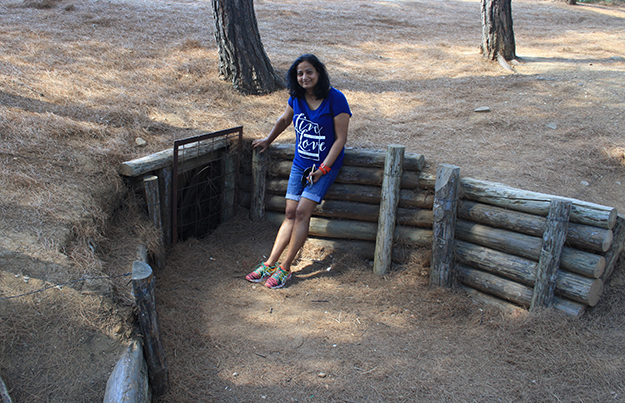
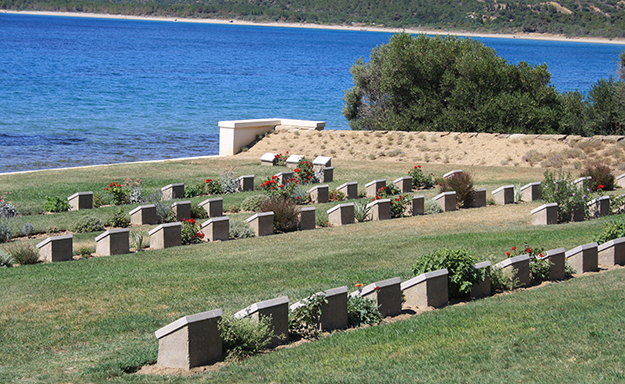
We had about fourteen sights and five hours which he assured us was enough to educate a mind ignorant of history. I swear he looked at me as he said this. I was terribly glad that I had Bjorn to voice my thoughts and opinion that sometimes was far removed from the object we were exploring!
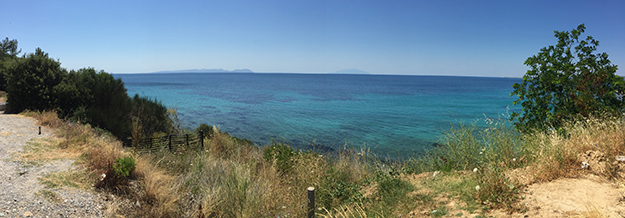
We stopped by ANZAC Cove on the Gallipoli Peninsular, now a beautiful stretch on the blue Saros Bay. The day was clear, the breeze cool and the blue waters were particularly tempting – although swimming was out of question. This site is of great importance in history – it is said, without this, the allied forces (France and Britain) during the WWI would have been unable to land here. The Allied forces intended to capture Istanbul (then Constantinople) to get through to Russia for the route to Russia had been blocked by the Turks.
History stand witness to the plans of the allied forces which aimed at capturing the entire Gallipoli Peninsula. The Allied force included New Zealand, Australia, French, British and Indian soldiers. Unfortunate circumstances (and history is witness to this), led to the death of thousands from both sides and the fallen soldiers now lie buried in the many war cemeteries in the area.
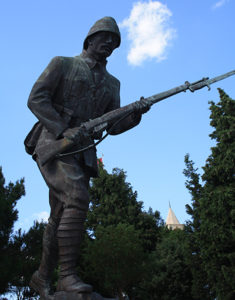
A year later, April 25 came to be called ANZAC Day and on that day every year scores of tourists from NZ and Australia visit Gallipoli to pay respects to their fallen men and take in the beauty of the surrounding areas – as the couple who shared my van were. Their knowledge of the war was commendable too and when not discussing life on an Australian farm, they engaged in profound conversation with the young guide.
ANZAC Day was of no particular importance to me, but I have been witness to this day in Papua New Guinea as well. It was during ANZAC Day, trekkers from Australia came to attempt the Kokoda Trail, a trail that I myself conquered in 2011. I was in awe of Australians and their commitment to ANZAC.
From one war cemetery to the next we traveled and as I said earlier, I am guilty of drifting off from time to time, eager to take pictures of different sights, often with Bjorn. We particularly enjoyed exploring the trenches of Johnston Jolly which gave an insight into the war that took place on ground we were standing on. Such a thought made you fully aware of the past and combined with cemetery visits and commentaries makes you feel as though you were in the middle of a battle.
I will speak for myself – there is a lot to know here and it is of particular interest for you if you are somehow connected with Turkey and its past, but at some point of walking up and down I experienced sharp pain in
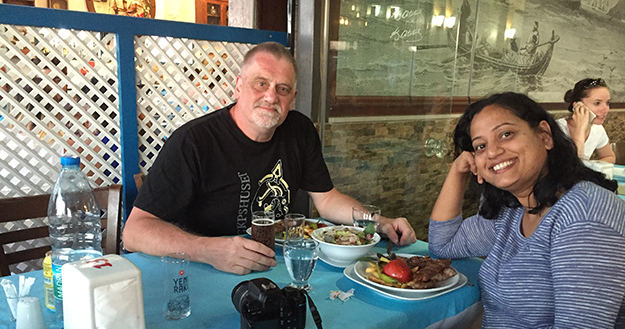
The Lone Pine Cemetery was particularly interesting and characterized by a lone pine tree which perhaps had sad tales to tell. It is the site where most of the Australian soldiers were buried. As a traveler, you are going to be introduced to a lot of statues or sculptures of both Turkish and Commonwealth soldiers and each add to the effect. The peninsula has over fifty memorials and over thirty cemeteries.
Unfortunately from this point on, my back had begun to hurt a little. Most inopportune, but there was little I could do. I looked forward to retiring for the day. The next day we were going to see the wooden horse. The thought was exciting.
Canakkale is home of the Wooden Horse
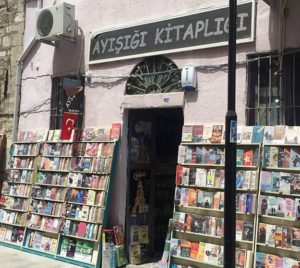
Late in the evening we boarded the ferry to cross to Canakkale in the Asian side of Dardanelles, our stop for the night. The town of Canakkale in itself may not hold a tourist’s interest for long, but what it does have is a traditional Turkish charm hard to find in the more touristy cities of Turkey.
Also, this is the place of the more ‘believable’ version of the legendary Trojan horse – a gift from the movie-makers of Troy 2004, compared to the rather stuffy version at Troy itself, of same gigantic size but far less imaginative.
The residents of this seaside town are dependent on fishing and tourism but the cobbled street of the old town briefly holds your attention with few Ottoman examples of architecture and houses. The Clock Tower is another attraction, like the museum of archaeology and military and for those interested in World War I, there is Çanakkale Naval Museum as well.
As previously decided, Bjorn and I met by the wooden horse (dedicated to the local government after wrapping up the shooting of the film TROY) and headed straight for dinner. It just so happened that Bjorn was going in the opposite direction and was not going to join the group for the tour of Troy.
The wooden horse of Troy with large windows
In my opinion, Troy or Truva has lot more to be proud of than just its mythical Trojan horse made famous by Homer’s Iliad. Troy is not as grand as Ephesus or Heirapolis in other parts of Turkey but is easily more than 2000 years older than any of them.
But as we walked through the ruins of Troy the following morning, I swear I heard a group of visitors snidely remark about the lack of “character” in the ruins and expressing disappointment over the wooden horse installed at the entrance. Fortunately I had come with an open mind and for me the piles of stones and walls were fascinating.
The thick walls that protected the town of Troy centuries ago, the ramps, column, a small dilapidated theatre, earthenware appear in places. Most of the information that you need to have can be found at strategic points and if you read the history of Troy, you will realize that it was actually built and rebuilt through nine eras. Archaeologists have classified these ears based on the finds, the nature of walls, the built up areas of the township, materials used, shapes of the houses and other things.
Excavation is still on in the area. All the information was on the boards, but it was wonderful to have the guide put things in perspective and bring facts to life – well, as much as he could. The rest was left to your imagination. If it helps, remember that the ruined walls of Troy are a clear indication of why it took the enemies (Achaeans) many years to break into Troy’s defenses.
Upon returning home I read a little more about Troy and things started to make sense. The old drawings on the wall that depicted Troy that fought the Trojan War in the BC made it believable in the present.
By the way – the wooden horse outside the ruins has little or no likeliness to the mythical Trojan horse – because, let’s face it, there is no evidence to show it even existed except in the imagination of its creator.
Useful Info
Distance from Istanbul: About 300km
Package trip: Advisable
Nature of tour: Historical
Highlights: Ruins of Troy, Dardanelle, AZAC Tour and great food

